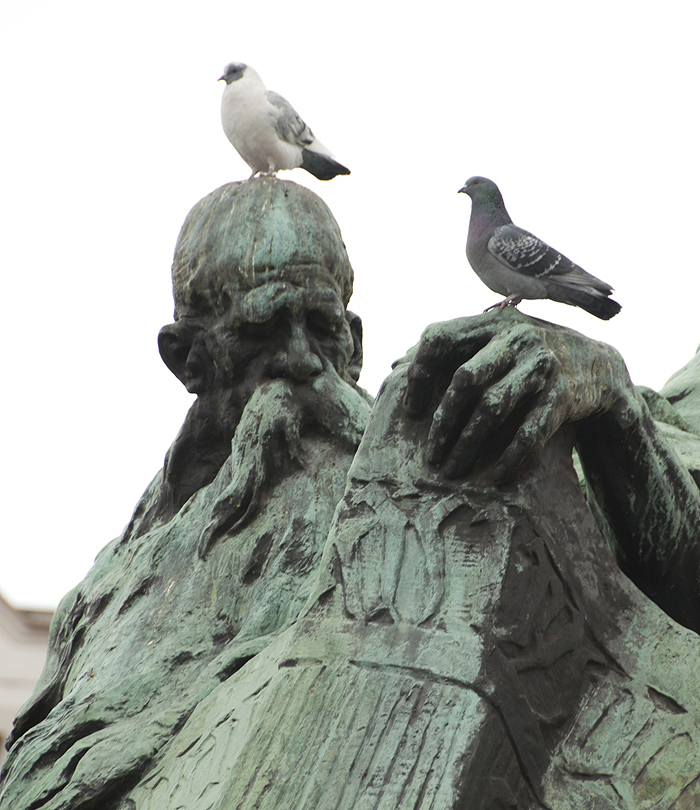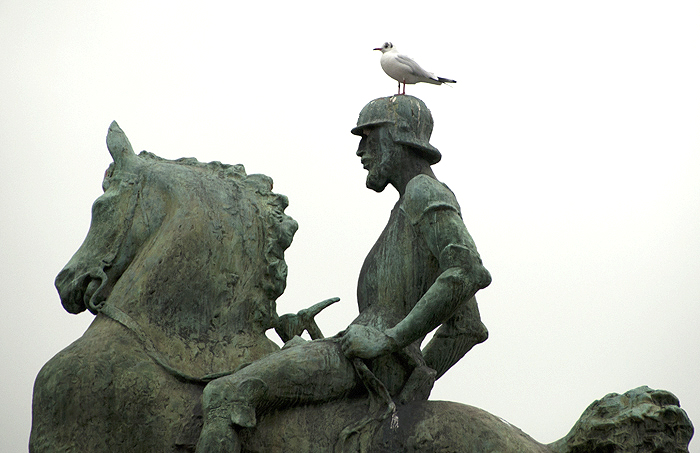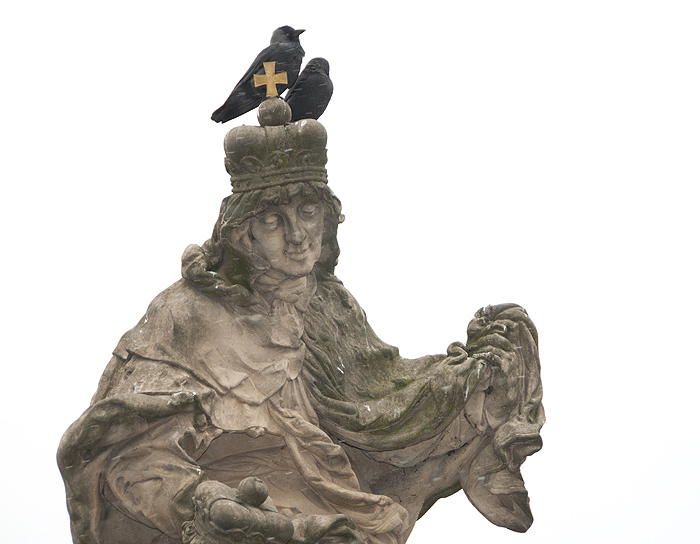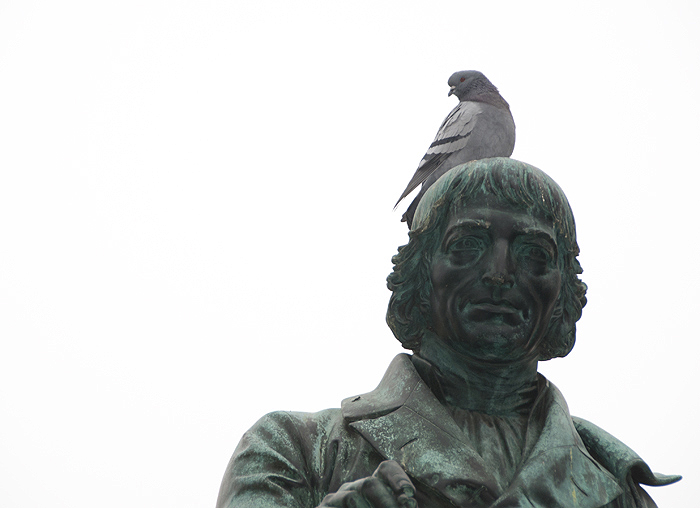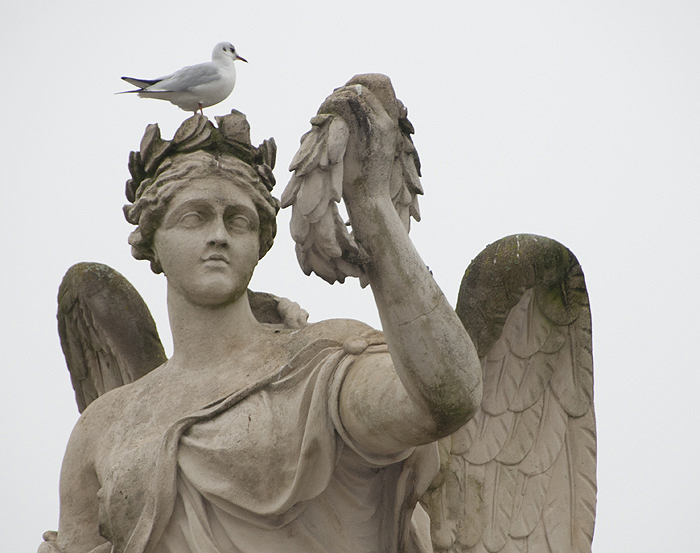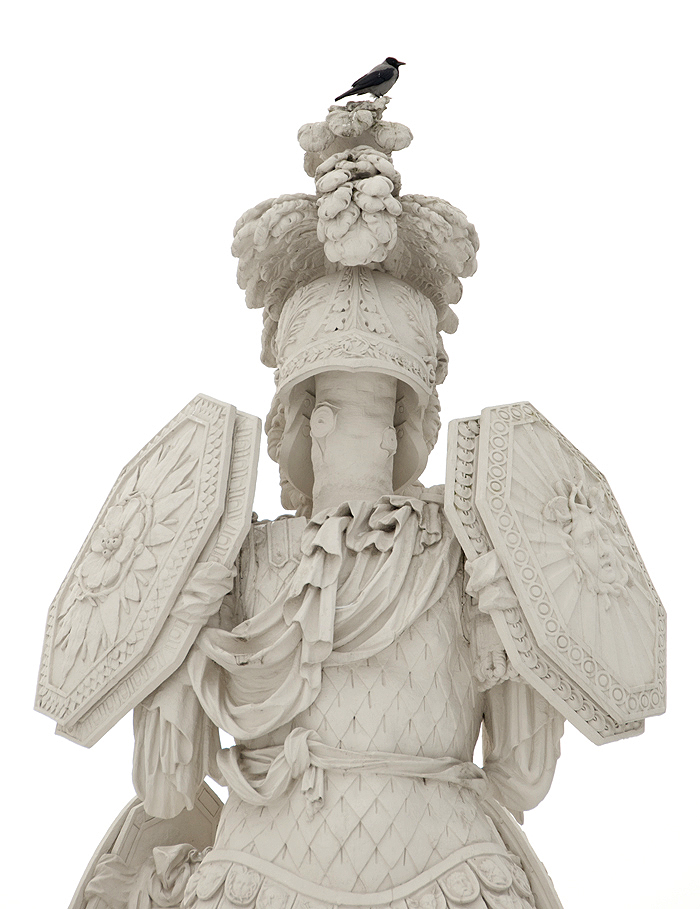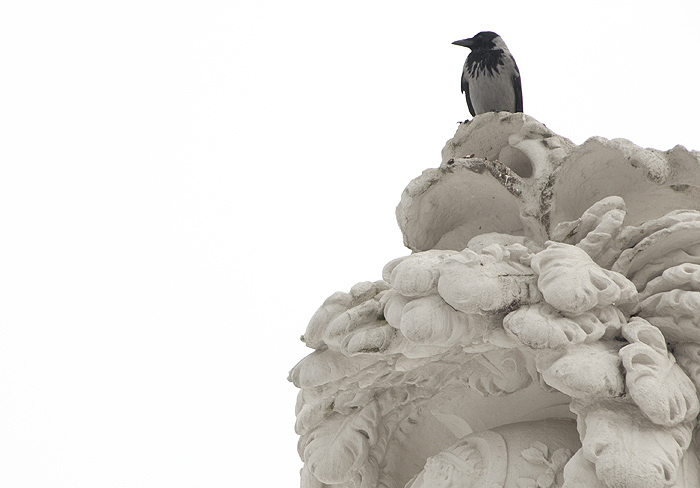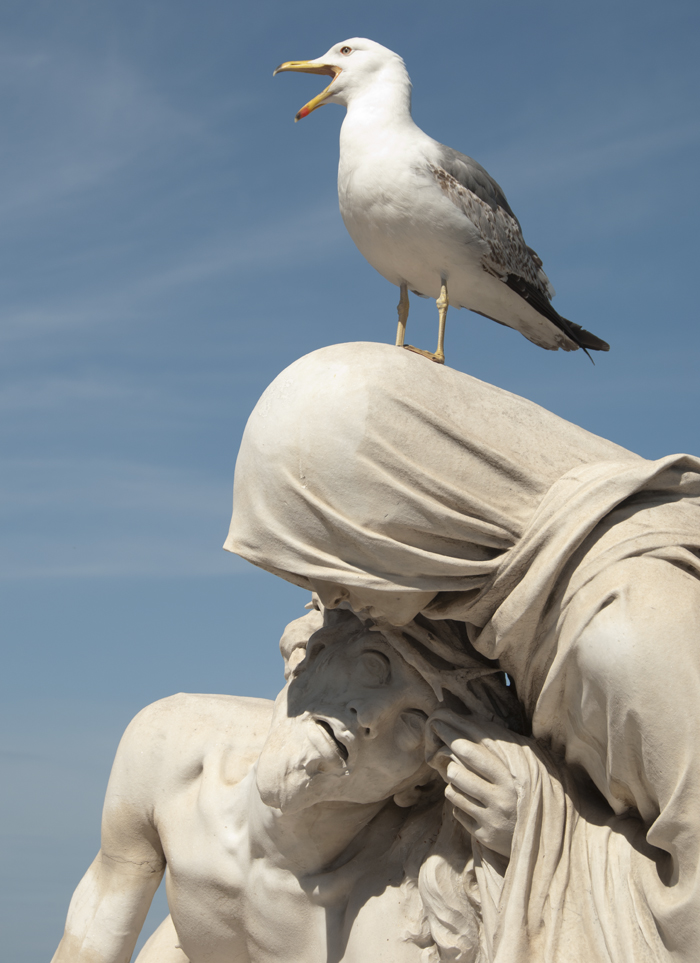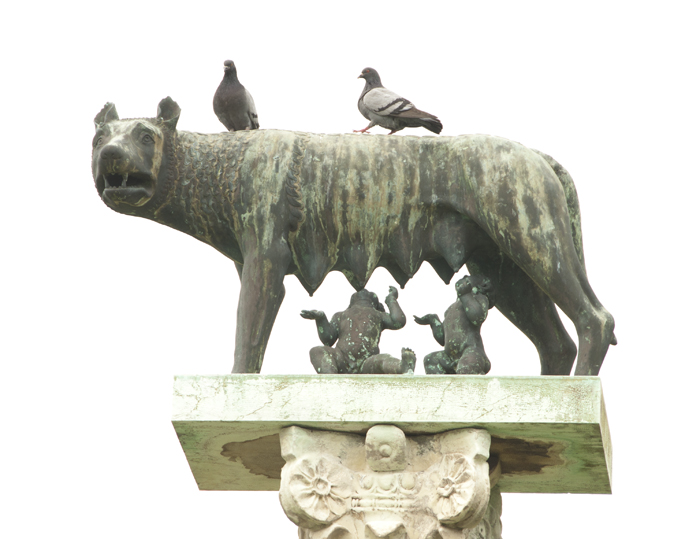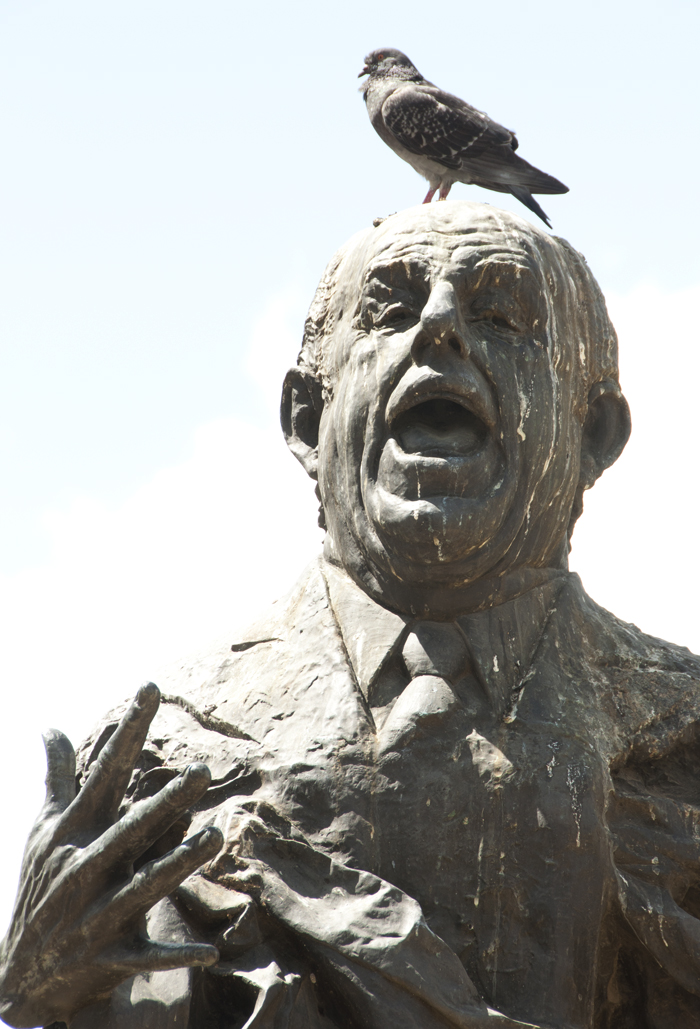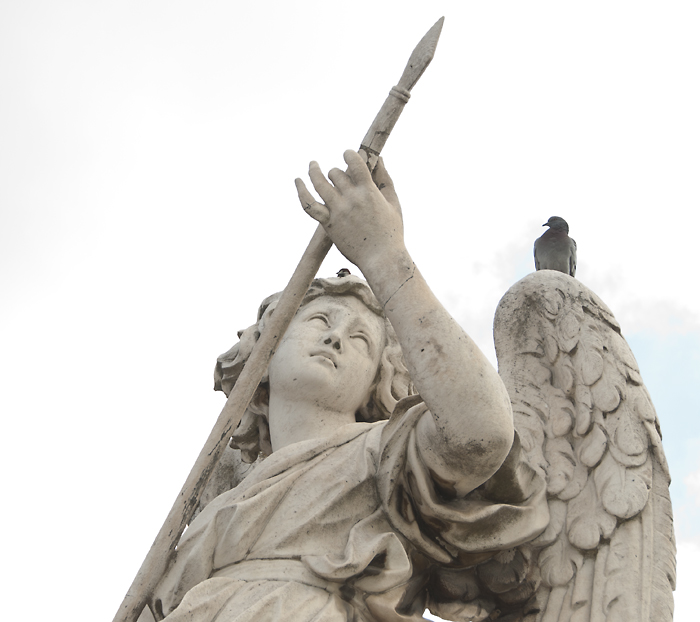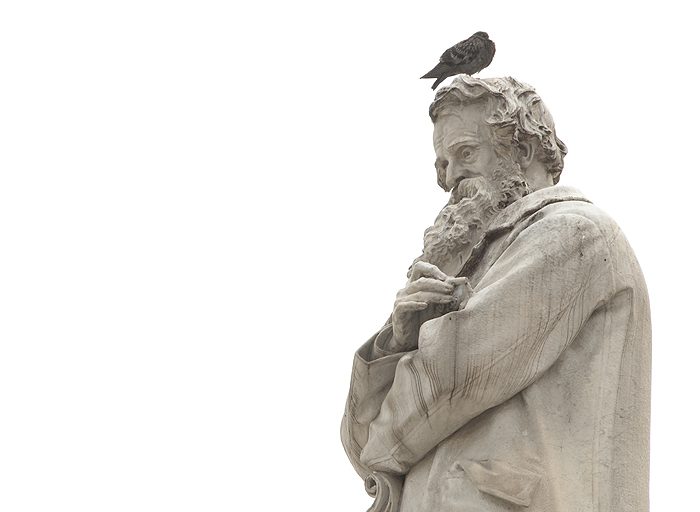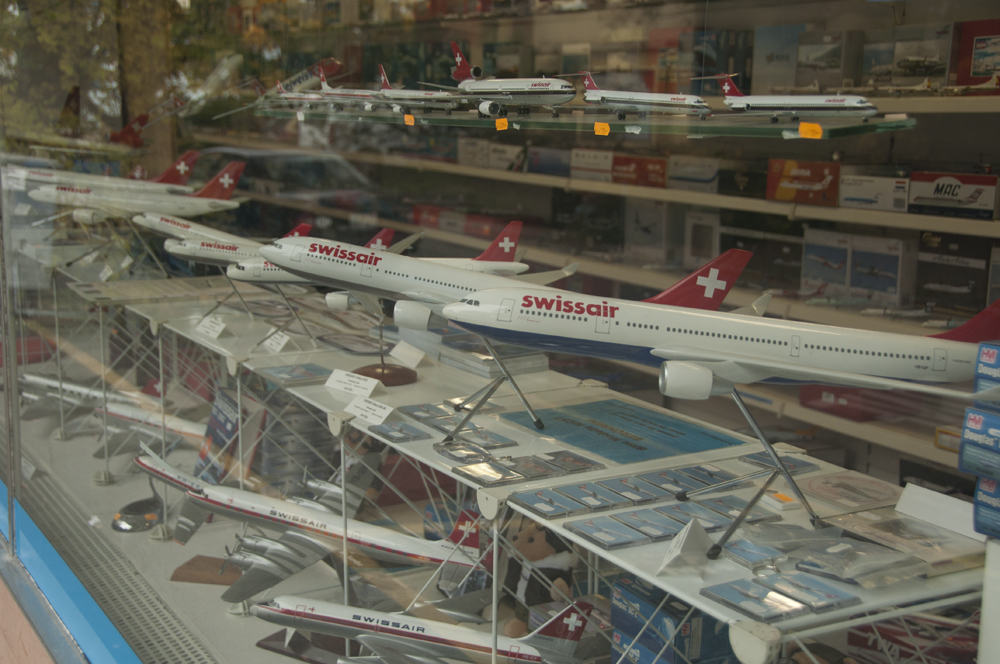Crapping on Napoleon’s Head
Carved in stone or forged in metal, statues are designed to make generation of people stop, gaze upward in awe, and reflect on someone who liberated/reigned/invented/ruled/fought/decreed/conquered themselves in to a pivotal moment in the evolution of a country or culture.
A statue is an eternal reminder that all who pass underneath should be forever indebted to the greatness this person bestowed on history.
Or maybe it’s just an easy place for a bird to take a crap.
I’ve recently noted the subtle humor in how many of the world’s statues, which depict the powerful men and women in chiseled greatness, are now little more than a perch on which a bird can take a momentary break from the shackles of gravity and relieve itself of the weight of its breakfast.
Imagine a self-aggrandizing ruler – a dictator perhaps – commissioning an imposing representation of himself, forged in metal, to loom over his fearful subjects as a constant reminder of his Draconian rule. Well, place a pigeon directly on top of his head and that foreboding presence dissipates as quickly as the whitewash running down his iron cheek.
I have had several opportunities to photograph birds on statues in Europe. Maybe it’s because Europe has a long, eventful history formed by powerful people. Maybe Europe has especially productive ironworkers and stone masons. Or maybe it’s because Europe is home to some particularly irreverent birds.
Zurich, Switzerland
On top a large, muscular stallion with a well-worn battle axe at his side, Hans Waldmann—15th century mayor of Zurich—could do little to dissuade this insolent Black-headed Gull. The bird was fortunate that this depiction of the Swiss military leader had a head on which to perch; Waldmann was relieved of his in 1489, due to accusations of financial corruption and sodomy.
Prague, Czech Republic
The neck of St. Ludmilla buckles under the weight of two complacent Eurasian Jackdaws. This statue is one of thirty lining Charles Bridge, a top tourist destination in Prague. While patron saint of many things—including converts, duchesses, Czech Republic, problems with in-laws—corvids and avian excrement are not listed among them.
Prague, Czech Republic
A Rock Pigeon cranes its neck pensively a top a statue of Joseh Jungmann, widely regarded as the creator of the Czech language and phrases like Slez z mé zasrané hlavy! (“Get off my bleeping head!”)
Prague, Czech Republic
The perfectly coiffed coils of Jan Hus are too irresistible to the dirty feet of this Rock Pigeon, who returns the favor by looking unabashedly in an opposing direction. Huss’ resisted the Catholic Church by insisting to preach in the native vernacular instead of mandated latin, a heresy that had him burned at the stake and the catalyst for the Hussite Wars between Catholics and Protestants. Hus became a symbol of strength for the Czech people as they suffered under oppressive regimes throughout history, including Habsburgs, Russians, Communists, and now, Guano.
Prague, Czech Republic
Neither his proximity to cultural icon Jan Hus, nor the fact that he was exiled during the Thirty Years War in the 17th century, nor his smooth, bulbous dome spared this gentleman from the ignominious talons of a pair of Rock Pigeons.
Versailles, France
A Black-headed Gull oblivious to the angel directly beneath it—unperturbed by her much larger wings. Perhaps the gull feels vindicated by dominating a statue at the entrance of one of the most opulently-decorated castles in the world. Gulls hate extravagant excess. Unless it involves french fries.
Vienna, Austria
Neither the armor depicted in this statue, nor the plumes that could have come from a distant cousin, could scare away this Hooded Crow. Instead this disinterested corvid casts an aloof gaze from this 18th century perch down on to the 1,441 room Schönbrunn Palace beneath it. Maybe the crows are the ones who literally defaced this statue and replaced it with a log. Crafty birds.
Marseille, France
A Yellow-legged Gull barely musters a yawn as Jesus Christ – the inspiration for one of the world’s most prolific religions – coils in pain directly underneath him. The bird doesn’t much care for the expansive view of France’s second largest city directly behind it, nor the fact that Jesus’ consoler is buckling under its weight, pushing her face directly on to his crown of thorns.
Pisa, Italy
A male pigeon struts amorously towards a female on the back of the Capitoline Wolf, a statue that depicts the founding of Rome. Most wouldn’t consider a metallic depiction of twin babies suckling from the plump teet of a she-wolf to be a powerful aphrodisiac, but pigeons are perhaps the most sexually-depraved of any bird.
Seville, Spain
The powerful pipes of Antonio Mairena, a famous flamenco singer from southern Spain, couldn’t scare off this domestic pigeon, nor could his smooth, bald head prevent the pigeons feet from grabbing hold. Somewhere deep inside the psyche of pigeon must lay at least some appreciation for this art form native to Seville: of all the white wash streaming down the side of Antonio’s head, almost none made it inside his capacious mouth. Classy.
Rome, Italy
Recent studies suggest that pigeons don’t believe in the afterlife, which probably explains this birds lackadaisical gaze towards an angel on the Sant’Angelo Bridge in the heart of Rome. Neither the freakishly large wings of this angel nor the fact that it was armed with a lance dissuaded this bird – nor the House Sparrow on the top her head – from roosting.
Venice, Italy
Pigeons are notorious for having exceptionally low literacy rates amongst birds. Certainly this individual didn’t even know it’d taken residence on the head of Niccolo Tommaseo, a “Dalmatian linguist” and writer from Italy. I believe this means he wrote about the tongues of spotted dogs, which seems like an awfully esoteric topic. That didn’t matter to this pigeon; it was just thankful that Niccolo wrote about enough canine tongues to warrant a tall and intricately carved perch.
Resources
- http://en.wikipedia.org/wiki/Hans_Waldmann_(mayor)
- http://en.wikipedia.org/wiki/Ludmila_of_Bohemia
- http://en.wikipedia.org/wiki/Josef_Jungmann
- http://www.praguestory.com/2012/05/jan-hus-memorial-old-town-square.html
- http://www.visitingvienna.com/schonbrunn/gloriette/
- http://en.wikipedia.org/wiki/Sch%C3%B6nbrunn_Palace
- http://en.wikipedia.org/wiki/Notre-Dame_de_la_Garde
- http://en.wikipedia.org/wiki/Marseille
- http://en.wikipedia.org/wiki/Capitoline_Wolf
- http://en.wikipedia.org/wiki/Antonio_Mairena
- http://en.wikipedia.org/wiki/Ponte_Sant%27Angelo
- http://en.wikipedia.org/wiki/Niccol%C3%B2_Tommaseo
Fringe Hobby Spotlight: Plane Spotting
I’m a birdwatcher. I get out of a perfectly good bed well before normal people. I drive long distances to visit locations as inviting as sewage treatment plants. I seek birds that are a range of sizes (most often small) and a flurry of colors (most often brown). Set my iPod to shuffle and you’ll find songs by Tool and Jurassic 5 intermixed with short interludes by Clay-colored Sparrow and Virginia Rail.
As a birdwatcher, I am intrigued by other hobbies that are a little off of center. On a train trip to London for the Olympics, my friend Mike and I sat with a gentleman from Quebec who collected Olympic postmarks. Not just stamps mind, nor Olympic stamps, but the circular cancelation stamps post office employees place over postage stamps. He showed us a binder—one of twenty-four in his collection—bulging with envelopes and postcards with postmarks for every Olympic competition since 1896.
On a weekend trip to Zurich Switzerland in late October, I met a gentleman who was well respected amongst followers of another esoteric hobby: plane-spotting.
I first learned of plane spotters several years ago; how they positioned their long lensed cameras near airports to capture images of commercial airliners of different makes, models, and carriers.
I periodically thought of my fellow peripheral hobbyists whenever I watched an airplane fly overhead. While I’ve trained myself to identify the subtle differences in flight profiles of Sharp-shinned and Cooper’s Hawks, I couldn’t tell you what separates a Boeing 747 from the equivalent Airbus though I know it must be obvious to the trained eye. The parallels with my beloved hobby birdwatching, including similar tools and techniques, nonetheless intrigue me.
[Editor’s Note: Adam promises to all his friends and family to not pursue another hobby that will alienate him even further from mainstream society.]
None of this was on my mind when I stumbled across Buch Air Center, a model plane store across the street from our hotel near the Zurich airport. I was drawn through the doors because I had never seen anything like it: hundreds if not thousands of model planes of different makes, models, carriers, and sizes. A pocket-sized Thai Air Boeing 737 to a four-foot long Airbus A340 donning the Swiss Air logo.
I asked the nice Swiss store owner behind the counter who’d collect such models. Some people only collect models of a certain size, he said, while some collect every make and model flown by a specific carrier. Some people just want a personal memento, for example the exact plane a couple flew on their honeymoon. Model companies are mostly British and German with some emerging from China, where he estimated 98.5% of the models are already manufactured. Carriers, like Lufthansa and Singapore Airlines, will allow companies to use their logo if they are able to give one to each of their employees for free.
I asked if he had many customers who were plane spotters. “Of course!” he responded, “I am one as well.”
This was a rare opportunity to better understand what drives the plane spotter so I identified myself as a fellow fringe hobbyist and proceeded to ask a bunch of questions. It turns out plane-spotting and birdwatching are quite similar.
Spot planes, helicopters, gliders, balloons …
No two birdwatchers are the same: some prefer scoping open water for birds while others specialize in birding by ear. Some only keep a list of birds they’ve seen in their backyard while others fly to each corner of the continent to build their “ABA list” (the American Birding Association list for continental United States and Canada). In plane spotting, some enthusiasts chase only commercial airliners, while others prefer military aircraft. A smaller and more … umm, enthusiastic subset chase any manmade object in the sky, including helicopters and business aircraft as well as gliders, drones, and even hot-air balloons. It is believed that plane spotting started in England and, like birding, the British have a reputation for producing the most manic participants.
Plane spotters keep life-lists
Armed with digital cameras and telephoto lenses, plane spotters grow their life-lists by successfully capturing images of their quarry, whether it be World War I German aircraft, or every make and model flown by a specific carrier. To an even greater extreme, some plane spotters collect images of every plane flown by a carrier (identified by unique serial numbers on their fuselage). The Swiss gentlemen with whom I spoke hadn’t tallied his list recently, but he estimated to have images for around 35,000 different commercial, military, and business aircraft in his collection.
Plane spotters employ similar strategies to birdwatchers
Every spring, birdwatchers flock to birdwatching hotspots like the Texas coast and the Florida Keys to tally scores of songbird species as they are migrating north from their tropical wintering grounds. These coastal areas are the first opportunities for birds to land after long flights over the Caribbean, thus serving as bottlenecks for dense flocks of birds you’d otherwise have to travel great distances to see. For example, a fortuitous bush could host both a Swainson’s Warbler and a Blackpoll Warbler, two species that, to see just weeks later, would require travel between the floodplains of southeastern United States and the boreal forests of Canada, respectively.
Similarly, plane spotters make efficient use of bottlenecks in the distribution of planes. Large airports that serve as hubs for multiple international carriers are effective targets as well as production facilities where planes can be “captured” as they come off the assembly line before they are delivered to more distance locations like Germany and Singapore. This Swiss gentleman had just returned from a trip to the Seattle where he visited Sea-Tac, Boeing Field in south Seattle, the Boeing production facility in Renton, and Payne Field in Everett.
Plane spotters have specialized field guides
No self-respecting birder goes in to the field without their trusty field guide, whether it be Sibley, Audubon, National Geographic, Peterson, Kauffman, or any combination thereof. Claudio Müller’s Airplanes of the World is an illustrated publication that provides short profiles on over 150 types of planes, including illustrations of its profile from above, side, and head-on. It is published annually to include all the most recent models, but with each addition, an older model is dropped, thus requiring a multiple volumes if a comprehensive reference is desired.
Plane spotters go on field trips
Every year, the World Economic Forum is held in Zurich and financial leaders arrive from all over the world to attend. This summer, the local chapter of plane spotters requested permission to access the tarmac where the planes were parked. Far from a small event, buses were used to transport well over a thousand international plane spotters to and from the airfield.
A recent field trip that made waves in the international plane-spotting community was a chartered flight into Pyongyang North Korea. Different from birdwatching, they are no professional guiding companies. Plane-spotting field trips are typically organized by individual hobbyists (perhaps inspired with the incentive of having their expenses covered by the group). Need help organizing a trip? You can purchase up-to-date catalogs of aircraft manufacturers, including detailed information on models names and serial numbers.
Our conversation was broken by the sound of the door opening. A gentleman with a spectacularly curled moustache entered the store and the two made a quick friendly exchange in German. A friend from a nearby plane-spotting chapter, the owner confided.
After monopolizing the storeowner’s time for nearly thirty minutes, I was happy to purchase the 2012 airplane field guide in my hand, even though it was in German. He threw in a small desktop calendar of commercial airliners for free.
Provided with free time, I’ll still opt to visit a verdant wetland over, say, Payne Field, unless the grassy perimeter holds a Sprague’s Pipit.
But I may learn the flight profiles of a few jetliners … and maybe a jet or two. Just a couple.

